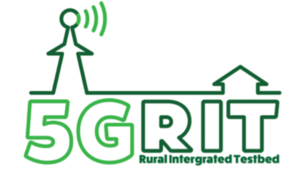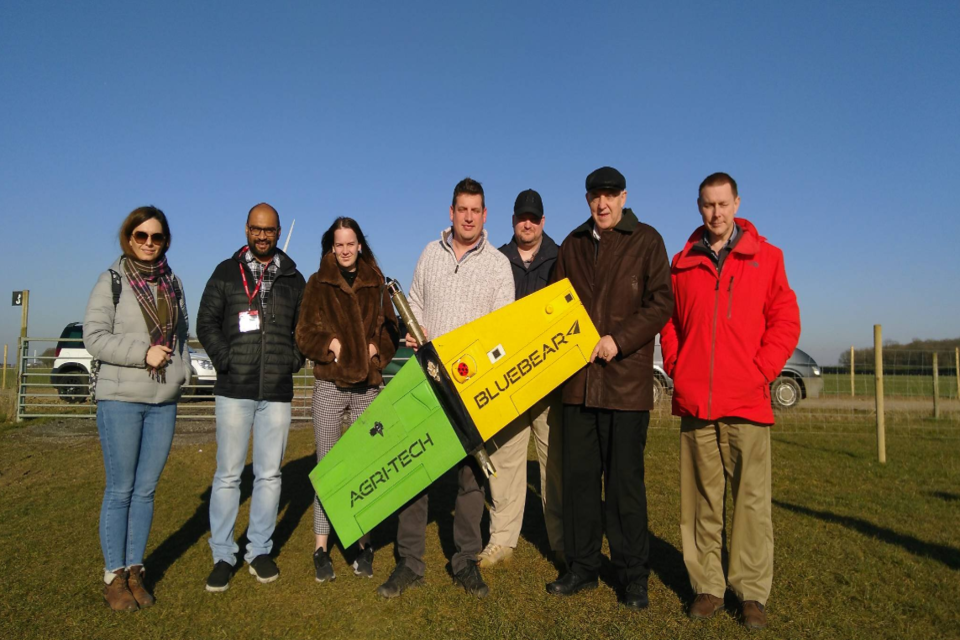5G Rural Integrated Testbed (5GRIT)
This rural 5G testbed connected rural communities

The 5G Rural Integrated Testbed (5GRIT) project was based in multiple rural locations - Cumbria, Northumberland, North Yorkshire, Inverness-shire, Perthshire and Monmouthshire. The project explored ways to lower the barriers to roll out infrastructure using alternative wireless technologies (TV White Space and 60Ghz) to test 5G technology across a range of rural applications, such as smart agriculture and tourism.
Key findings

- Similar to AutoAir and the Liverpool 5G Testbed, 5GRIT showed that 60GHz mesh technology can be used to provide good data connectivity even in rural areas, though the cost benefit was not explored here.
- TV White Space (TVWS) was found to be unreliable in delivering high data rates in the areas tested, but the project provided useful lessons for the wider use of shared spectrum, such as issues with interference and the need for enough contiguous spectrum.
- The project demonstrated that using drones allows better management and fertiliser placement, increasing yields by over 10%.
- Remotely-operated drones can collect large amounts of data to monitor the state of crops and livestock to reduce time spent for farmers in fields. However, this would be unlikely to pay for the infrastructure investment in low margin areas, such as the sheep farming used in this trial.
- A full 5G network in rural areas could reduce loneliness and isolation amongst farmers as the use cases become more automated.
Use cases

- Using 5G infrastructure to test whether the content from a mobile Augmented Reality (AR) app - World Around Me - could work in local tourist hot spots (e.g. Alston Moor) and Areas of Outstanding Natural Beauty (AONB).
- Users were keen to use the app that demonstrated content including local heritage audio/video storytelling and local events information.
- This improved visitor’s experience and made a positive impact on local businesses thanks to the number of page visits and interactions with the app. This could potentially attract thousands of pounds to local businesses.
- The project aimed to use alternative wireless technologies to test whether superfast broadband (30Mbps) could be delivered to properties in rural areas which are currently very hard to reach.
- TVWS only produced acceptable speeds in a few instances and was unreliable in the areas tested and with the early stage equipment used.
- The 60GHz mesh technology saw stable broadband speeds when used for local distribution. Users reported positive feedback on the stability and consistency of the connectivity, which exceeded the target minimum to 50Mbps.
- The agricultural use cases used 5G-enabled drones and machine to provide farmers with real time data on the state of their livestock or crops.
- Data shows that regular checking of harvest quality, visualises it and allows fertiliser to be better spread to allow more even and larger harvest.
- Reduced animal feed and increased grazing -. 40% reduction in purchased animal feed due to improved use of grazing land.
- 5G use cases automated some manual processes, saving time and enabling other tasks to be done. 5G enabled drones to monitor livestock on a daily basis on a large farm area to test whether they would deliver productivity benefits for the farmer, but in this low margin sheep farming use case the costs outweigh the benefits.
Reports
-
Interim Final Report – TV White Space to Assist 5G - This report looks at TV White Space (TVWS) as an alternative method of connectivity in rural areas based on the trials from 5GRIT.
-
Other reports from the project can be found on the 5GRIT website and on UK5G.
Project partners
- Quickline (Lead)
- Blue Bear Systems (precision farming service)
- Broadway Partners (broadband service)
- Cybermoor (monitoring and evaluation)
- King’s College London
- Kingston University (precision farming service)
- Lancaster University (monitoring and evaluation)
- North Pennines – Area of Outstanding Natural Beauty
- Precision Decisions (precision farming service)
- WT InfoTech (makers of ‘World Around Me’ AR app)
More information can be found on UK5G.
Updates to this page
-
Updated case study
-
First published.